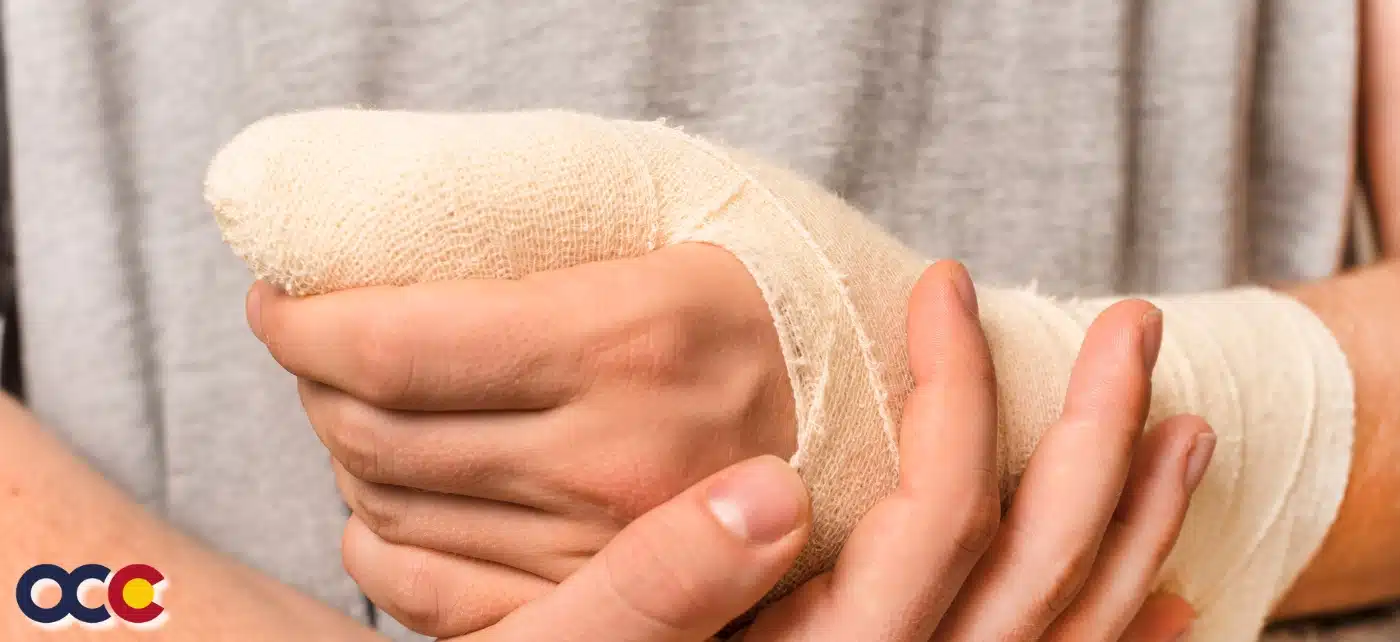Most people don’t think about their thumb often. It’s just there, taken for granted. However, the thumb plays a major role in the critical functions of the hand. The thumb is needed for grasping, pushing, pulling, and just picking up and holding objects. A thumb fracture can dramatically reduce your ability to do any of these things. Thumb fracture symptoms may be similar to those of a severe strain, so it is important to see an experienced orthopedic doctor for an accurate diagnosis and timely treatment. You need look no further than Advanced Orthopedic & Sports Medicine Specialists in Denver, Parker, or Aurora, Colorado. Any delay can cause the injury to worsen and may slow the recovery process.
OVERVIEW
The thumb constitutes almost 40% of hand function. A thumb fracture is a break or crack to the bone. Thumb fractures are relatively common; 12% of hand fractures occur in the thumb. When there is a thumb fracture, it is not just the bone that’s affected. There will most likely be injuries to some of the soft tissues around it, including muscles, ligaments, tendons, and nerves. There isn’t a significant gender-based predisposition for a thumb fracture. The risk of thumb fractures is often more associated with activities, occupations, and lifestyle factors.
ABOUT THE THUMB
Several bones contribute to thumb function. The bone under the nail that makes up the tip of the thumb is called the distal phalanx. The next bone is called the proximal phalanx. These two bones connect via the interphalangeal (IP) joint, which allows the tip of the thumb to bend. The thumb connects to the hand through the next joint, known as the metacarpophalangeal (MCP) joint. This joint sits between the proximal phalanx and a bone in the hand called the first metacarpal. This bone is connected to the wrist by the carpometacarpal (CMC) joint, which sits between the metacarpal and a carpal bone called the trapezium. There is an area of webbing between the thumb and the first finger that allows one to spread the thumb out to grasp an object.
WHAT IS A THUMB FRACTURE?
Fractures can break in a straight line, spiral pattern, split into pieces, or completely shatter. Fractures that extend into the joint may cause future stiffness, arthritis, and pain. Fractures associated with open wounds increase the risk of infections that may get deep into the bone. Fractures can also be associated with ligament injuries, which are soft tissues that cause the bones to bend or straighten. Two types of thumb fractures:
- Bennet Fracture: a fracture at the base of the thumb metacarpal involving the CMC joint. This type of fracture usually involves a clean break with two significant pieces of bone on either side of the fracture.
- Rolando Fracture: similar to a Bennet fracture but with more broken pieces or fractures at the base of the first metacarpal. This type of fracture may create a T or Y-shaped pattern.
CAUSES
Risk factors that can contribute to an increased likelihood of thumb fractures:
- Trauma or events such as car or bicycle accidents
- Falling and landing on the thumb
- Pulling the thumb back too far
- Excessively twisting the thumb joint
- Sports such as wrestling, hockey, football, skiing, volleyball, football, or baseball
- Construction work and manual laborers
- Calcium deficiency and osteoporosis
- History of bone disease
SYMPTOMS
- Sudden and severe pain in the thumb
- Swelling around the base of the thumb
- Extreme tenderness
- Tingling and numbness in the thumb
- Thumb feels cold to the touch
- Limited or no ability to move the thumb
- Thumb appears misshapen
NON-SURGICAL TREATMENTS
Non-surgical treatments may include:
RICE protocol (rest, ice, compression, and elevation), immobilization with a splint or cast that can keep bones in place allowing them to heal properly, over-the-counter pain relievers such as acetaminophen or nonsteroidal anti-inflammatory drugs (NSAIDs), activity modification: limiting activities that could strain the healing thumb
Another treatment is called closed reduction: this is used to move the bones of the thumb back into their correct position without surgery. The surgeon lines the bones up by hand.
WHEN IS SURGERRY INDICATED?
Severe fractures or thumb fractures with significant deformity may require surgery to restore the bones to their original position. Fractures that extend into the joints are more complex and may warrant surgery to reduce the risk of painful arthritis. Fractures may be associated with tendon or ligament injuries, which may require surgery to reconstruct to restore function. Open reduction and internal fixation is the surgery to straighten broken bones. Wires, screws, metal plates, or pins may be used to hold the bones together. In some cases, the surgeon will extend a plate device outside the skin. This is called external fixation.
GETTING THE RIGHT DIAGNOSIS. GETTING THE RIGHT DOCTOR.
When you get a thumb fracture, the first thing you want is incredible care from a skilled and experienced orthopedic specialist like the professionals you’ll find at Advanced Orthopedics in Denver, Parker, or Aurora, Colorado. Although any of the bones in the hand can succumb to fracture, thumb fractures may be among the most challenging to overcome if, for example, they are misdiagnosed as sprains, which present with many of the same symptoms. X-rays will help your surgeon detect a fracture and determine where and what type of break you have. A CT scan may show ligament or tissue damage. In every case, at Advanced Orthopedics, you can trust you are getting the best care to get you back to work, back to play, and just back to doing the everyday things that keep life moving smoothly. Schedule an appointment today if you are experiencing thumb pain.










